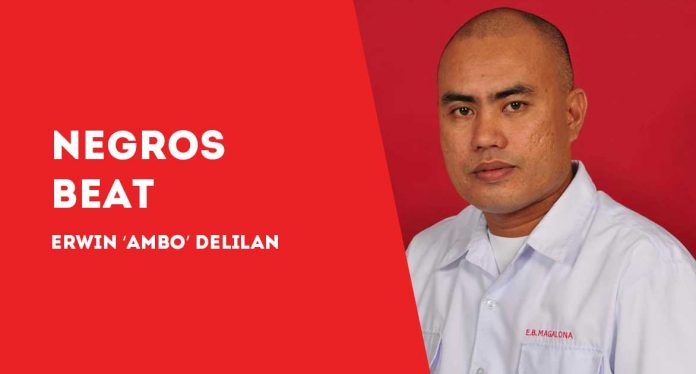
By ERWIN ‘AMBO’ DELILAN
CLOUD SEEDING is one of the “hottest” topics in the province of Negros Occidental right now.
Amid high/hot temperatures, almost all politicians in the southern part of the province are “itching” to have cloud seeding as soon as possible.
This, as lands are drying, crops are dying, and agri losses are increasing. Thus everybody is whining.
However, the Department of Agriculture (DA) in Western Visayas through its Bureau of Soils and Water Management (BSWM) refuses to recommend cloud seeding.
BSWM has its own basis – scientific at that!
Conducting a cloud seeding, BSWM stressed, will do more harm than good, thus impractical.
But Negros Occidental 5th District’s Cong. Dino Yulo, a sugar planter, won’t buy BSWM’s reasoning.
Frustrated, disgusted and disheartened, he said BSWM sounds “defeatist” or “inept”.
For the solon, it’s bad to hear something negative from a government agency which primary task is to address or mitigate the impact of El Niño.
Aside from Cong. Dino, Gov. Bong Lacson, and 6th District Board Members Jeffrey Tubola and Macho Alonso are also “begging” for a cloud seeding. Their very premise: 17 towns and cities in southern Negros are now “languishing” from the dry spell.
LACK OF SEEDABLE CLOUDS
But BSWM, in its updated recommendation, stressed the current situation doesn’t necessitate the conduct of cloud seeding which costs around P60,000 per hour, not including yet the logistics and staff from the Philippine Air Force.
But above all, the factuality is, according to BSWM, the months of November in 2023 to April this year were already identified as dry periods for Climate Type III.
Likewise, DA-6 assistant regional director Albert Barrogo said the absence of towering cumulus clouds (TCCs) also hinders the possibility of endeavoring cloud seeding in Negros.
Ergo, the conduct of cloud seeding these days will not even result in light to moderate rains, especially in March to April due to lack of moisture and less seedable clouds in Negros Occidental, said BSWM.
It also said that the monitored satellite water vapor during the assessment period was dominated by dry/warm conditions which conforms with the dry season period.
Besides, BSWM said that based on its recent thorough validation, most of the rain-fed farms in Negros Occidental are on a fallow status, thus, cloud seeding is unnecessary already.
But claimed by Cong. Dino, “Damo-damo rain clouds, tapos indi pwede ang cloud seeding sa Negros kay kuno maapektatuhan ang naga-pamulak nga mga paho sa Guimaras?”
‘MANGO REASONING’
Now, let’s proceed to the controversial “mango reasoning”.
BSWM said it’s true that “forced” cloud seeding may only affect the vast mango plantations both in San Carlos City in Negros Occidental and Guimaras.
And the figures are:
* In San Carlos City – 20,659 mango trees (induced and in fruit development).
* In Guimaras – 2,752 mango trees (that included those in the bud emergence, fruit setting and development and maturity status)
Aside from mango, Guimaras’ thriving cashew nut industry might also be damaged, BSWM also warned.
But countered by Cong. Dino: “Flimsy reasoning!”
POSSIBILITY OF CONTAMINATION
Question: Is there truth behind the science of cloud seeding presented by BSWM?
I did a research, and www.earth.org led me to this realization that, indeed, there is a scary possibility of contamination, a significant unknown, in cloud seeding.
And mishandling of silver iodide and other chemicals could set off a chain reaction of environmental pollution, with consequences echoing across natural ecosystems and posing tangible risks to human health.
A bit scary, right?
IRRIGATION FACILITIES
Now, talking of mitigating moves toward solutions for El Niño, Barrogo said cloud seeding is just for temporary relief.
What Negros needs right now are sustainable irrigation facilities like in Bago City.
Having more irrigation facilities in the province, Barrogo says, will address even the several (future) El Niño phenomena to come.
Barrogo believes that Cong. Dino could help realize this proposal.
The Sugar Regulatory Administration (SRA) is the key thru its annual budget of P1 billion for quick response fund (QRF), Barrogo said.
Question: Will Cong. Dino bite the bullet?/PN



